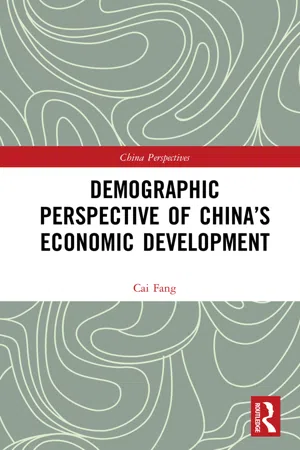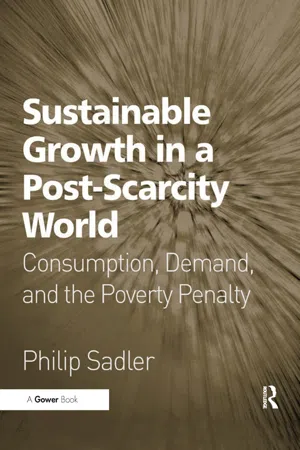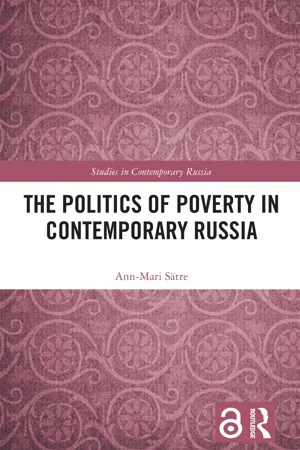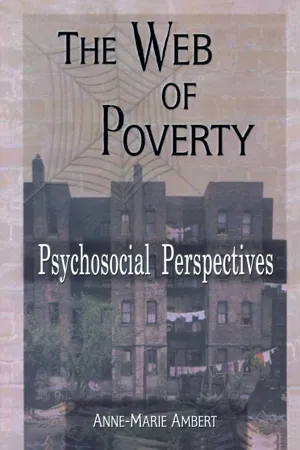Economics
Poverty Trap
The poverty trap refers to a situation where individuals or communities are unable to escape poverty due to various factors such as lack of access to education, healthcare, or economic opportunities. This can create a cycle of poverty that is difficult to break, as those affected may not have the resources or support to improve their circumstances, leading to a persistent state of deprivation.
Written by Perlego with AI-assistance
Related key terms
4 Key excerpts on "Poverty Trap"
- Fang Cai(Author)
- 2020(Publication Date)
- Routledge(Publisher)
Meanwhile, many researchers disagree on the use of the concept of the middle-income trap. Although systematic research is not yet available, in what follows, we touch on the nature of such disagreements. First, some researchers hold that the word “trap” is improper, because it suggests “conspiracy”. How can an economy be framed? Second, some economists think that unlike the theory of the Poverty Trap or vicious circle of poverty, there is no economic theory available that can explain the many phenomena related to the so-called middle-income trap. Third, some suppose that the middle-income-trap theory lacks empirical evidence. It is also pointed out that over the past forty years, growth performance of middle-income countries has not been significantly lower than that of high-income and low-income countries. Last but not least, some researchers doubt the issue’s relevance to China: does the concept of the middle-income trap correctly depict China’s challenges and will it help China find the right solutions?A concept or proposition is worth bringing forward so long as it can be analyzed through theoretical frameworks, and has significant empirical evidence and specific relevance, so that more thorough discussion and studies can be carried out. For that reason, this article supports the concept of the middle-income trap and holds that relevant studies should be deepened. This article starts, in Section 5.2 , with a review of economic theories, of economic growth theories in particular, and demonstrates that the middle-income trap can certainly be included in existing economic growth analysis frameworks or has the potential of forming a special framework of its own. Section 5.3 introduces some empirical studies and statistical proofs of the middle-income trap and summarizes relevant characteristics of the concept. Finally, by introducing characteristics of China’s economic development phase, Section 5.4 discusses the implications of the concept of middle-income trap for China’s sustainable economic growth.5.2 Theoretical basis of middle-income trap
Traditionally, the word “trap” is used to describe an economic state of super-stable equilibrium that is beyond a comparative static equilibrium and cannot be changed by normal short-term outside forces. In other words, after the effect of a factor that helps improve per capita income is fully brought out, because it is somewhat unsustainable, other restraining factors will begin to work and offset that effect, bringing per capita income back to the original level. For example, the pessimistic views of Thomas Robert Malthus on the relationship between population growth and economic development are reflected in the “Malthusian trap” or the “Malthusian equilibrium”. R. R. Nelson went further to combine the Malthusian model with the Harrod–Domar growth model to form a development theory which is called the low-level equilibrium trap, used as a label for the less-developed countries (Hayami and Gōdo, 2009). Moreover, not only is absolute poverty an equilibrium state; some economic historians have put forward the hypothesis of “high-level equilibrium trap” as they try to explain China’s historical development and fix the Needham Puzzle. Therefore, the use of the term “equilibrium trap” has a long history in development economics.- eBook - ePub
Sustainable Growth in a Post-Scarcity World
Consumption, Demand, and the Poverty Penalty
- Philip Sadler(Author)
- 2016(Publication Date)
- Routledge(Publisher)
In Collier’s opinion, the problems these countries have are very different from those addressed for the past four decades in developing countries generally. Aid in its traditional form does not work well in these environments. Change in the societies at the very bottom must come from within. In all these countries, there are struggles between those trying to achieve change and entrenched interests opposing it. Much can be done to strengthen the hand of the reformers. But to do so will involve drawing upon a wide range of approaches.Collier lists a number of factors which, taken together, lead to persistent extreme poverty.The Conflict Trap
Some of the bottom billion countries are stuck in a pattern of violence, either a prolonged, civil war or a series of coups d’état. Countries with a high level of dependence on exports of valuable resources such as oil or diamonds are particularly likely to be conflict-ridden. Natural resources help both to finance conflict and to motivate it.The Natural Resource Trap
It might be assumed that the discovery of natural resource wealth would be a catalyst for prosperity, but this is only exceptionally the case. The ‘resource curse’ causes countries to suffer from the ‘Dutch disease’ (so-called because of the effects of North Sea gas on the Dutch economy), whereby resource exports cause the country’s currency to rise in value against other currencies, thus making the country’s other export activities uncompetitive.The Landlocked Trap
Landlocked countries incur much higher costs to import or export goods. Costs vary in ways that don’t depend on distance. The transport costs for a landlocked country depend on how much its coastal neighbour has spent on transport infrastructure. Landlocked countries also depend on their neighbours for markets; if neighbours are economically stagnant or embroiled in civil war that will obviously affect trade.The Trap of Poor Governance
Poor governance and policies can destroy an economy with alarming speed (Zimbabwe provides an obvious example). The leaders of some of the poorest countries are among some of the global superrich. Many of the politicians and senior public officials in the bottom billion are corrupt. - eBook - ePub
- Ann-Mari Sätre(Author)
- 2019(Publication Date)
- Routledge(Publisher)
This chapter paid attention to existing attitudes, what strategies active people have and what are the links between them. Do people want to hide, do they protest or do they try to change their own behaviour? People have expressed the view that both society and the individual are to blame for poverty. If you blame individuals, it is usually connected with the idea of people being passive, not trying to do anything to change their life. To answer the question whether they are able to get out of poverty or not, we have looked into what kind of actions they have chosen: are they coping to survive or using strategies to actually change their situation? What have they done concretely? The data highlights that. I also show the process explaining why people are not able to get out of poverty no matter how active they are. The importance of resources and agency is clear, it is both about what resources they have and their ability to use them, to transform them.A large portion of Russian families is close to the edge of poverty; younger families and families with many children are closer than others. There is a large share of wage earners whose wages are below subsistence level, providing a significant indicator of hardship. The situation some people end up with is chronic poverty where expenses are constantly higher than income. In order to handle the gap people have used whatever resources they have, which means that some of them have exhausted their resources. Losses of wealth among the poorest is a tendency which means that quite a few are losing a buffer they have had for possible future difficulties.What is left is your own labour power, and a tendency to work more and more in order to cope with a difficult situation. What is even more worrisome is that reaching this point makes people highly vulnerable. If something happens, it might easily start a downward fall.To conclude, even if society is to blame, this does not mean that individuals cannot do anything to change their situation. But they need some resources.Notes
1 The continued dependency on natural resources was reflected in employment patterns as well as in relative wages in the 1990s (Sätre 2001). In the first decade of the new century, average wages continued to be highest in the gas industry and oil extraction, and lowest in agriculture and the consumer industry (Rossiya v tsifrakh - eBook - ePub
The Web of Poverty
Psychosocial Perspectives
- Terry S Trepper, Anne Marie Ambert(Authors)
- 2014(Publication Date)
- Routledge(Publisher)
Unskilled immigrants, whether from one region to another or from another country, can no longer expect to secure the types of readily available and well-remunerated jobs that existed during earlier waves of immigration (Lieberson, 1980). It has been suggested that governments may have to be more selective in terms of immigration policy (Briggs, 1996). However, at least in Canada, the mere mention of selectivity gives rise to charges of racism and elitism. Moreover, porous borders and interminable coastlines make it difficult to curtail illegal immigration.ConclusionThe key causes of poverty are global and affect everyone in each of our societies; however, affluent as well as reasonably well-remunerated individuals are advantaged by these social factors. Indeed, the current structure and culture of the economy is sustained only because it strongly benefits approximately 25 percent of the population. Were it to threaten the welfare of professionals, executives, and well-paid employees, one would see an entirely different discourse emerge quite rapidly. But as long as only the poor and the economically marginal are devastated, the overall situation remains unchallenged. The disadvantaged do not have a voice, do not have power, and they vote less often than other citizens. In addition, they are not major shareholders of corporations, and their buying power is too minimal to affect governmental and corporate policies.Many current causes of poverty, such as the globalization of the economy, are perceived favorably or as inevitable by some economists, politicians, and corporation heads (Korten, 1995). The goal of international competitiveness becomes a major underlying factor in the discourse emphasizing personal causes of poverty, such as school dropout. Within this ideological context, school dropout is socially defined as detrimental because it threatens to reduce future competitiveness on the global market. But there are other reasons why it is detrimental—human reasons—which are not given preeminence. We can think here of the fact that a lack of education narrows life options for individuals in terms of health, employment, and family life; it also closes avenues of enjoyment by reducing options in the domain of leisure activities. These human consequences are in themselves powerful enough reasons to develop a system that encourages youth to remain in school longer and corporations to be more responsible to the needs of the citizens of their country.
Learn about this page
Index pages curate the most relevant extracts from our library of academic textbooks. They’ve been created using an in-house natural language model (NLM), each adding context and meaning to key research topics.



